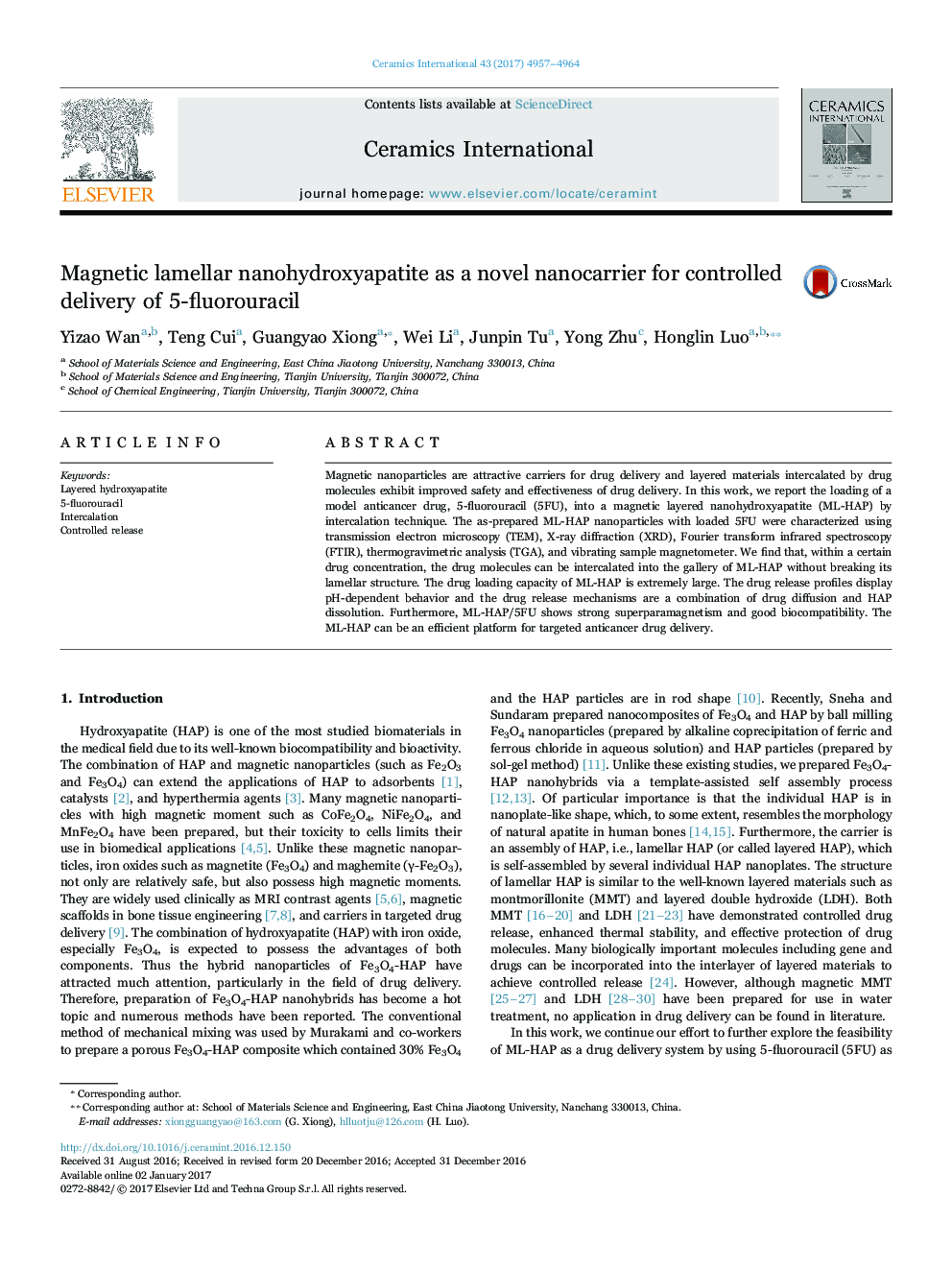| Article ID | Journal | Published Year | Pages | File Type |
|---|---|---|---|---|
| 5438626 | Ceramics International | 2017 | 8 Pages |
Abstract
Magnetic nanoparticles are attractive carriers for drug delivery and layered materials intercalated by drug molecules exhibit improved safety and effectiveness of drug delivery. In this work, we report the loading of a model anticancer drug, 5-fluorouracil (5FU), into a magnetic layered nanohydroxyapatite (ML-HAP) by intercalation technique. The as-prepared ML-HAP nanoparticles with loaded 5FU were characterized using transmission electron microscopy (TEM), X-ray diffraction (XRD), Fourier transform infrared spectroscopy (FTIR), thermogravimetric analysis (TGA), and vibrating sample magnetometer. We find that, within a certain drug concentration, the drug molecules can be intercalated into the gallery of ML-HAP without breaking its lamellar structure. The drug loading capacity of ML-HAP is extremely large. The drug release profiles display pH-dependent behavior and the drug release mechanisms are a combination of drug diffusion and HAP dissolution. Furthermore, ML-HAP/5FU shows strong superparamagnetism and good biocompatibility. The ML-HAP can be an efficient platform for targeted anticancer drug delivery.
Related Topics
Physical Sciences and Engineering
Materials Science
Ceramics and Composites
Authors
Yizao Wan, Teng Cui, Guangyao Xiong, Wei Li, Junpin Tu, Yong Zhu, Honglin Luo,
